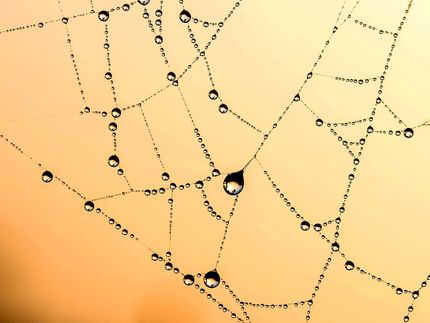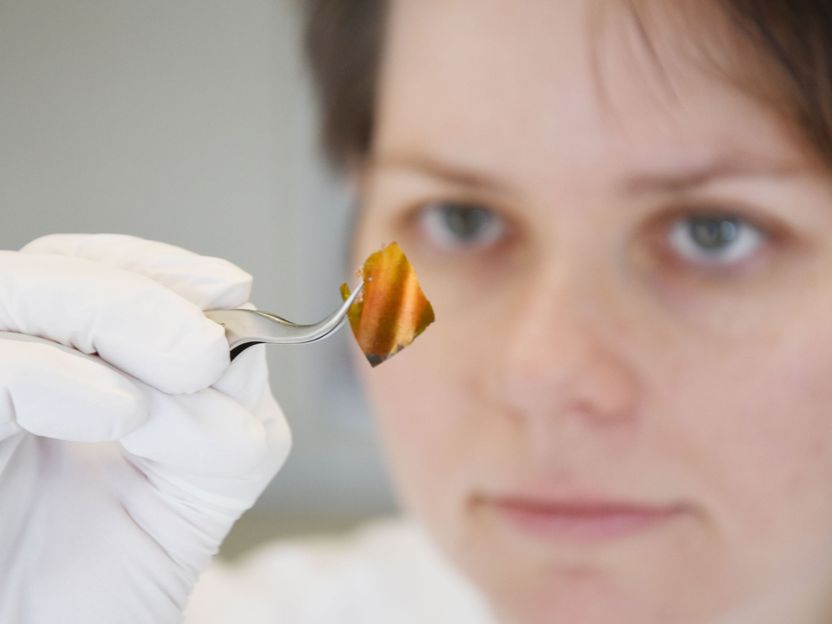Bioinspired process makes materials light, robust, programmable at nano- to macro-scale
Ultralight web of silk nano fibers withstands load 4,000 times its weight
Researchers at Tufts University's School of Engineering have developed a new bioinspired technique that transforms silk protein into complex materials that are easily programmable at the nano-, micro- and macro-scales as well as ultralight and robust. Among the varied structures generated was a web of silk nano fibers able to withstand a load 4,000 times its own weight.

Ultralight web of silk nano fibers withstands load 4,000 times its weight
Silk Lab Tufts University
Structural proteins are nature’s building blocks, forming materials that provide stiffness, structure and function in biological systems. A major obstacle to fabricating comparable synthetic materials is natural materials' hierarchical structure which confers unique properties from the molecular to the macro level. When scientists try to emulate this structure, they often find that control at one scale hinders control at other scales.
The Tufts researchers combined bottom-up self-assembly characteristic of natural materials with directed, top-down assembly to simultaneously control geometry at all scales, micro-mechanical constraints and solvent-removal dynamics—all of which determine biomaterial properties.
"We generated controllable, multi-scale materials that could be readily engineered with dopant agents. While silk is our main focus, we believe this approach is applicable to other biomaterials and composites and synthetic hydrogels," said corresponding author Fiorenzo Omenetto, Ph.D., Frank C. Doble Professor in the Department of Biomedical Engineering. Omenetto also has an appointment in the Department of Electrical and Computer Engineering and in the Department of Physics within the School of Arts and Sciences.
With the new technique, centimeter-scale silicone molds were patterned with micro-scale features no thicker than a human hair. An aqueous fibroin protein gel derived from silkworm cocoons was injected into the molds and then mechanically stressed by contraction of the gel in the presence of water and ethanol and/or physical deformation of the entire mold. As the system dried, the silk protein's structure naturally transformed to a more robust beta-sheet crystal. The material's final shape and mechanical properties were precisely engineered by controlling the micro-scale mold pattern, gel contraction, mold deformation and silk dehydration.
"The final result of our process is a stable architecture of aligned nano fibers, similar to natural silk but offering us the opportunity to engineer functionality into the material," said first author Peter Tseng, Ph.D., postdoctoral scholar in Omenetto's Silk Lab at Tufts' School of Engineering.
In some of the experiments the Tufts researchers doped the silk gel with gold nanoparticles which were able to transport heat when exposed to light.
Tseng noted that webs spun by spiders are structurally dense rather than porous. "In contrast, our web structure is aerated, porous and ultra-light while also robust to human touch, which may enable every-day applications in the future," he said. A 2 to 3 cm diameter web weighing approximately 2.5 mg was able to support an 11 gram weight.
Original publication
Other news from the department science
Most read news
More news from our other portals
See the theme worlds for related content
Topic world Synthesis
Chemical synthesis is at the heart of modern chemistry and enables the targeted production of molecules with specific properties. By combining starting materials in defined reaction conditions, chemists can create a wide range of compounds, from simple molecules to complex active ingredients.

Topic world Synthesis
Chemical synthesis is at the heart of modern chemistry and enables the targeted production of molecules with specific properties. By combining starting materials in defined reaction conditions, chemists can create a wide range of compounds, from simple molecules to complex active ingredients.

































































